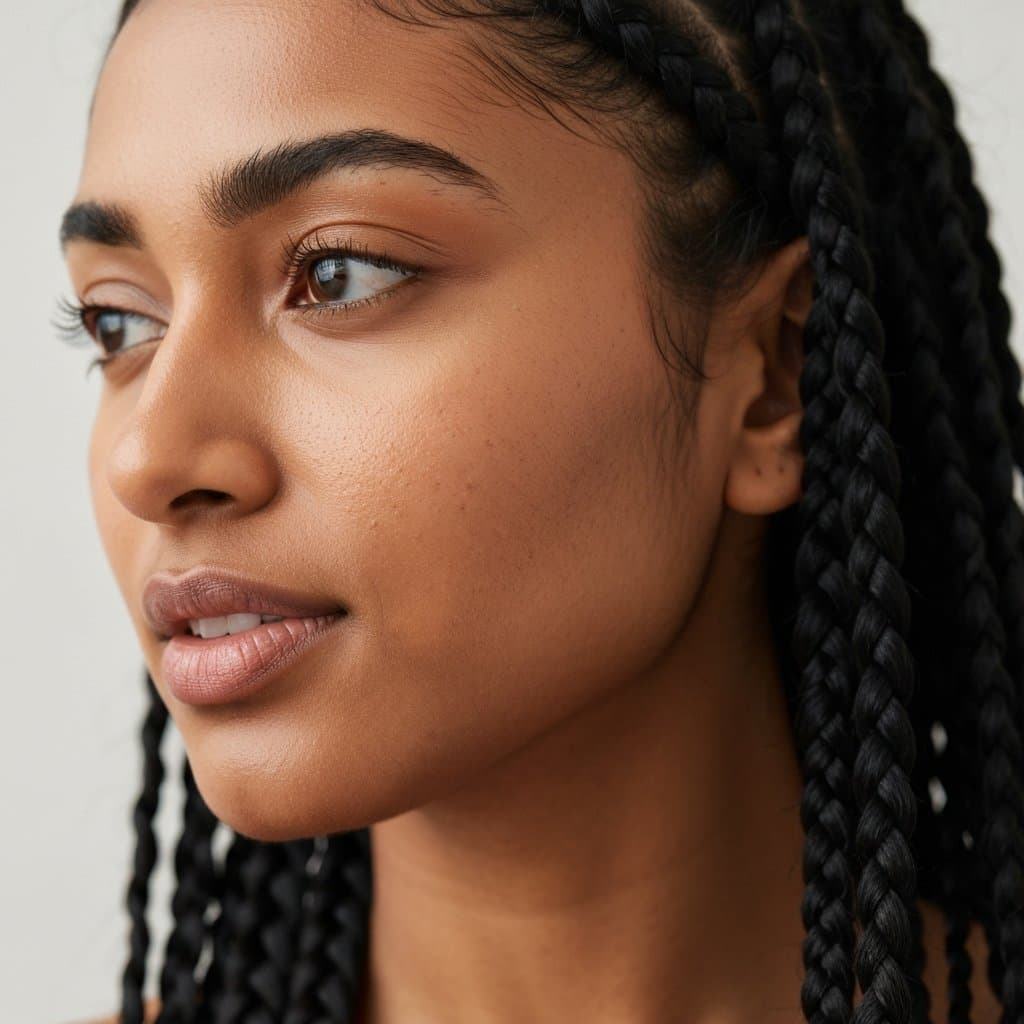Knotless Braids: The Hottest Protective Style of the Year | A Complete Guide
The Reign of Knotless Braids: More Than Just a Trend
In the ever-evolving world of hair fashion, some styles arrive with a whisper, while others make a seismic impact. Knotless braids have firmly established themselves in the latter category, becoming the undisputed hottest protective style of the year. Moving beyond a fleeting trend, they represent a significant evolution in braiding technology, prioritizing hair health and comfort without sacrificing an ounce of style. If you've scrolled through social media, you've undoubtedly seen these sleek, natural-looking braids gracing the heads of celebrities, influencers, and style-savvy individuals everywhere. But what is it about knotless braids that has captured the hearts and scalps of so many?
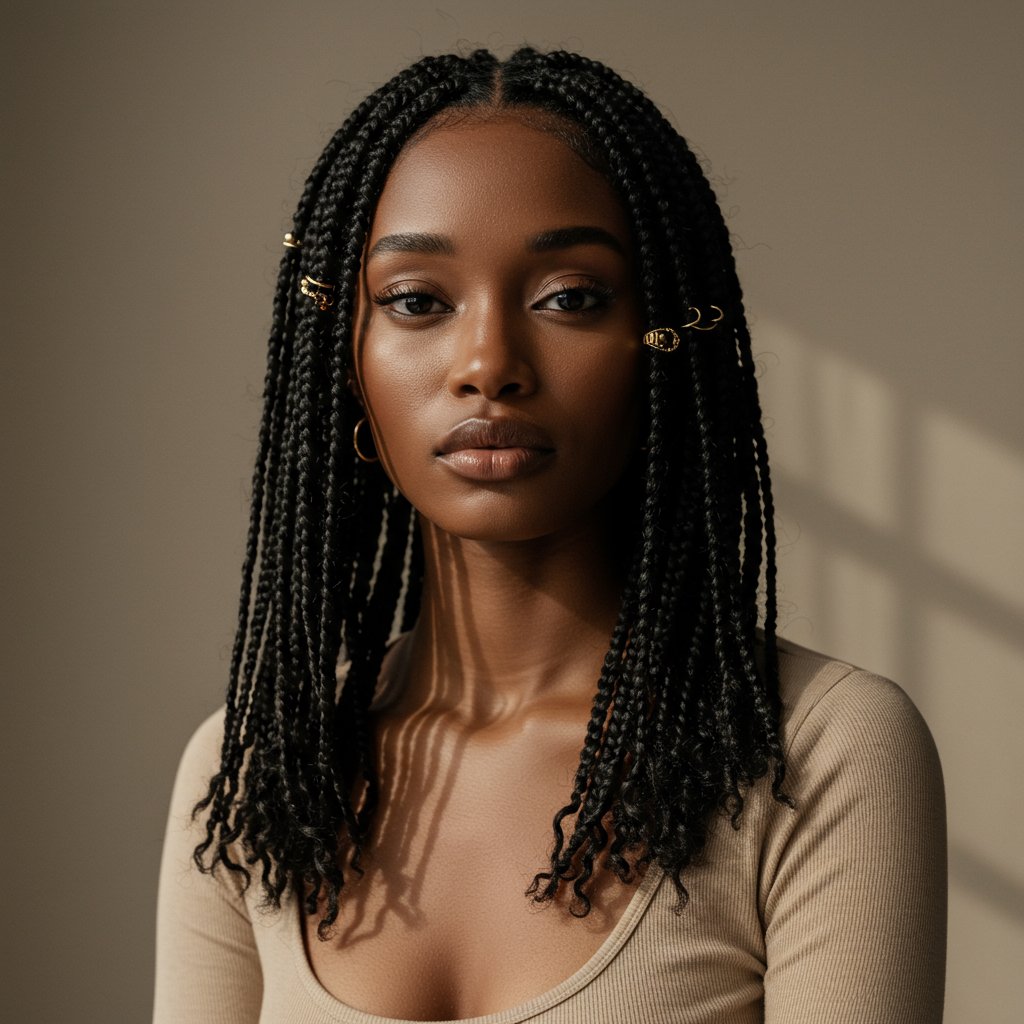
This comprehensive guide will delve deep into the world of knotless braids. We'll explore what makes them fundamentally different from their traditional counterparts, unpack their extensive list of benefits, and walk you through the installation and maintenance process. Whether you're a protective style veteran or considering braids for the first time, this article will provide all the information you need to understand why knotless braids are not just a hairstyle, but a revolutionary movement in natural hair care. Get ready to discover the style that offers unparalleled beauty, versatility, and, most importantly, peace of mind for your hair and scalp.
What Exactly Are Knotless Braids? A Modern Twist on a Classic Style
The magic of knotless braids lies in their innovative installation technique. Unlike traditional box braids, which begin with a small, tight knot created by wrapping extension hair around the base of your natural hair, knotless braids start with your own hair. The stylist begins by braiding a small section of your natural hair and then gradually and seamlessly feeds in small pieces of braiding hair as they move down the shaft. This method, known as the feed-in technique, is the key differentiator and the source of all the style's acclaimed benefits.
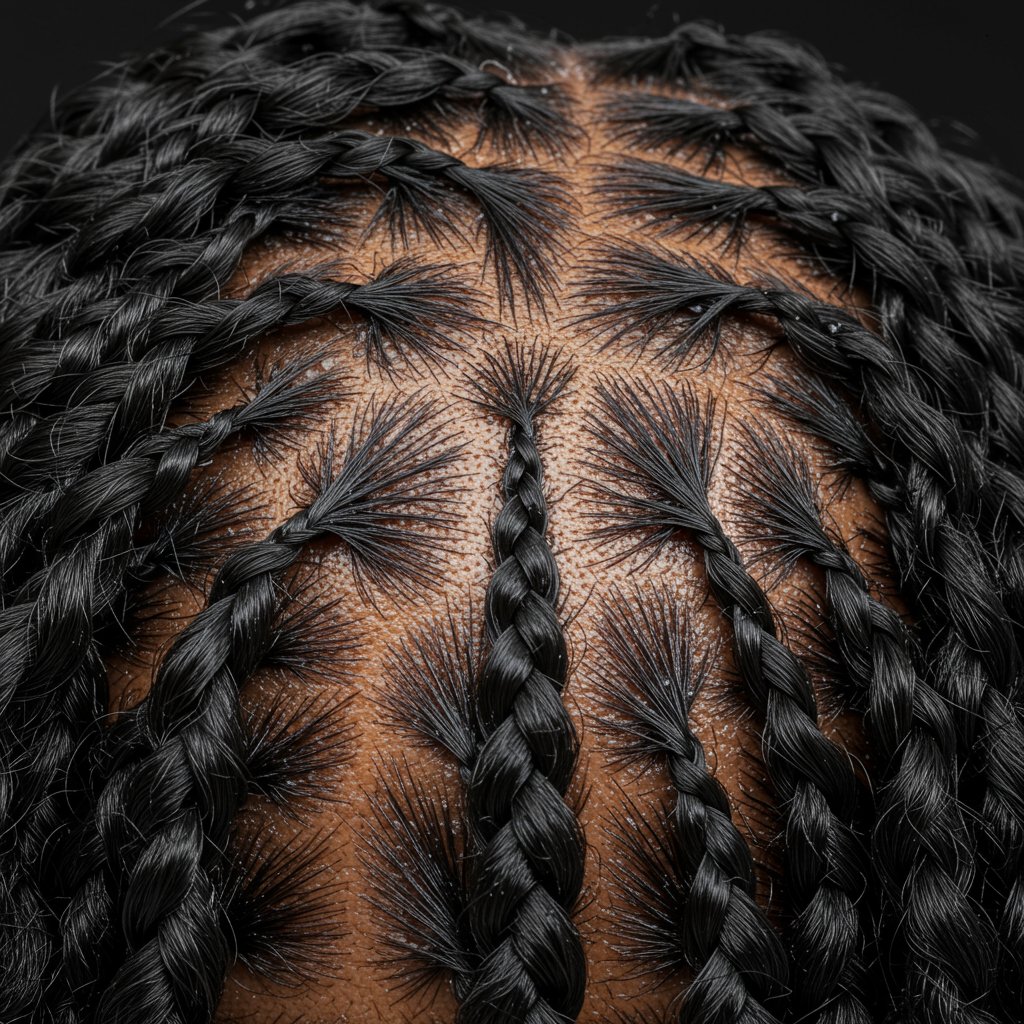
This technique eliminates the tension-heavy anchor knot that is notorious for causing scalp pulling, tenderness, and sometimes even traction alopecia. The result is a braid that lays flat against the scalp, offering a more natural and seamless appearance from root to tip. The transition from your natural hair to the extension is so smooth it's often hard to tell where one begins and the other ends. This flat-laying start not only looks more organic but also provides immediate flexibility, allowing you to style your braids in a high ponytail or bun from day one without the usual pain or stiffness associated with new braids.
The Unbeatable Benefits: Why Everyone is Choosing Knotless Braids
The surge in popularity for knotless braids isn't just about aesthetics; it's rooted in tangible benefits that prioritize the health and comfort of the wearer. These advantages have made them a go-to choice for those seeking a truly protective style.
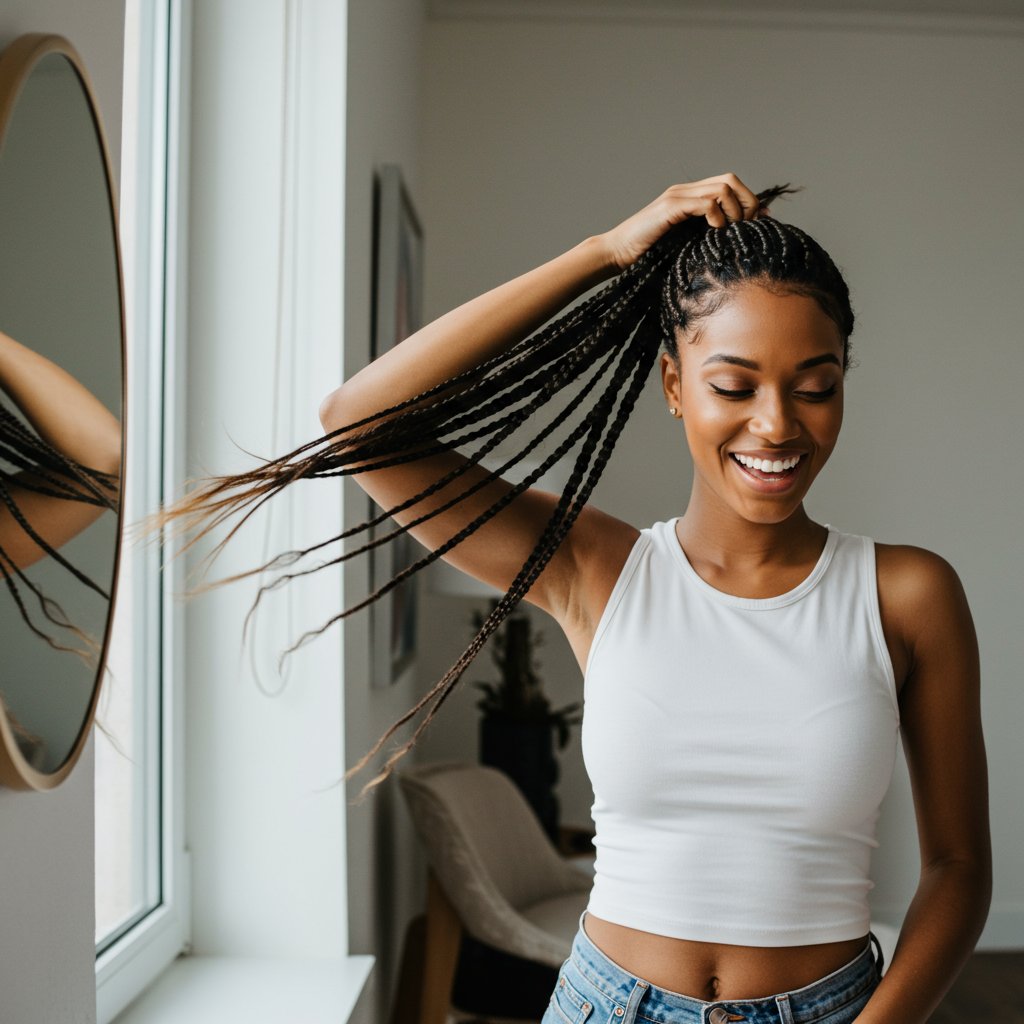
Less Tension, Healthier Scalp
This is the number one reason people make the switch. The absence of the initial knot significantly reduces the tension on the hair follicles. This reduction in pulling minimizes the risk of scalp irritation, inflammation, and the potential for hair loss known as traction alopecia. For individuals with sensitive scalps, this feature is a game-changer, transforming the braiding experience from one of endurance to one of enjoyment. The gentler approach helps preserve the health of your edges and overall hairline.Natural, Seamless Appearance
Knotless braids offer a sleek, streamlined look that grows out more gracefully than traditional box braids. Because they start with your natural hair, they lay flat and move more like individual strands of hair. As your hair grows, the new growth blends in more subtly, extending the life of the style and maintaining a polished look for longer. The lack of a bulky knot at the base creates a more sophisticated and less conspicuous finish.Lightweight Comfort and Flexibility
By gradually adding hair, the weight of the extension is distributed more evenly down the braid shaft. This makes the overall style feel significantly lighter and more comfortable to wear, even with longer lengths. This lightweight nature, combined with the lack of a stiff anchor knot, grants immediate flexibility. You can sweep your hair into an updo, a ponytail, or any style you desire right after leaving the salon, without the typical one-to-three-day waiting period for the braids to 'loosen up.'The Installation Process: What to Expect at Your Salon Appointment
Achieving flawless knotless braids is an art form that requires a skilled stylist. Understanding the process can help you prepare for your appointment and ensure the best possible results.
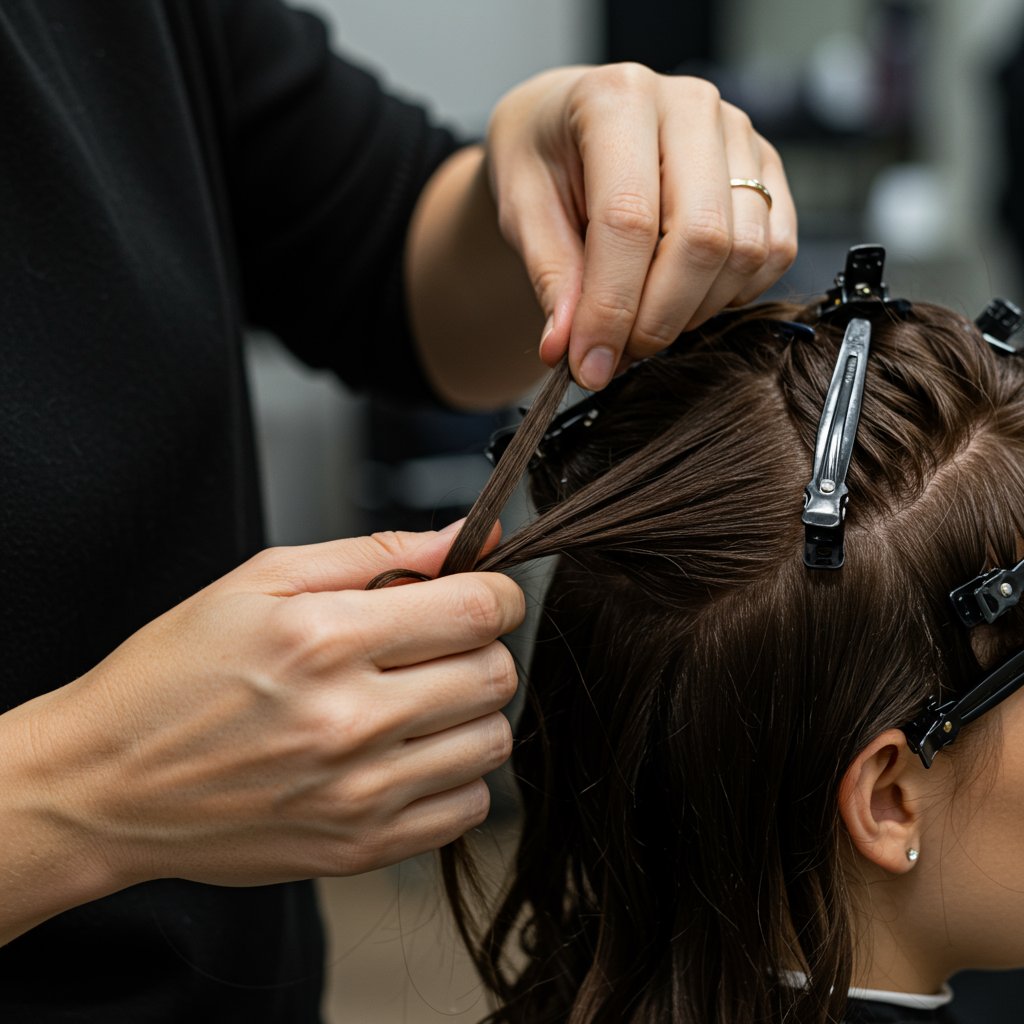
Step 1: Prep is Paramount
A professional installation always begins with a clean and well-moisturized foundation. Before your appointment, your hair should be freshly washed, deep-conditioned, and thoroughly detangled. Most stylists prefer to work on hair that has been blow-dried straight or stretched, as this creates a smoother canvas for clean parting and braiding. This preparation step is crucial for minimizing frizz and ensuring the longevity of the style.Step 2: The Parting Game
Precision is key. Your stylist will meticulously part your hair into clean sections according to the desired size of the braids—be it small, medium, or jumbo. The grid of parts (box, triangle, or free-form) is the blueprint for the entire style, and clean, sharp parts contribute significantly to the final polished look. A rat-tail comb and a good parting gel are a stylist's best friends during this stage.Step 3: The Feed-In Technique
This is where the knotless magic happens. The stylist will take a section of your natural hair and begin a standard three-strand braid. After a few passes, they will start feeding in small, pre-separated pieces of braiding hair, incorporating them seamlessly into the braid. They continue this process, adding more hair as they braid down the length, until the desired thickness and length are achieved. This requires a high level of dexterity and experience to ensure the braid is secure and consistent from root to tip.Step 4: Sealing the Ends
Once all the braids are installed, the final step is to seal the ends to prevent unraveling. The most common method is dipping the ends in hot water, which smooths and seals the synthetic fibers of the braiding hair. Some clients opt for curly ends, which can be achieved with perm rods before dipping. Finally, a light oil sheen or mousse is often applied to the braids to add shine and tame any flyaways.Knotless vs. Traditional Box Braids: A Head-to-Head Comparison
To truly appreciate the innovation of knotless braids, it's helpful to see a direct comparison with their traditional predecessors. While both are beautiful protective styles, they offer very different experiences.
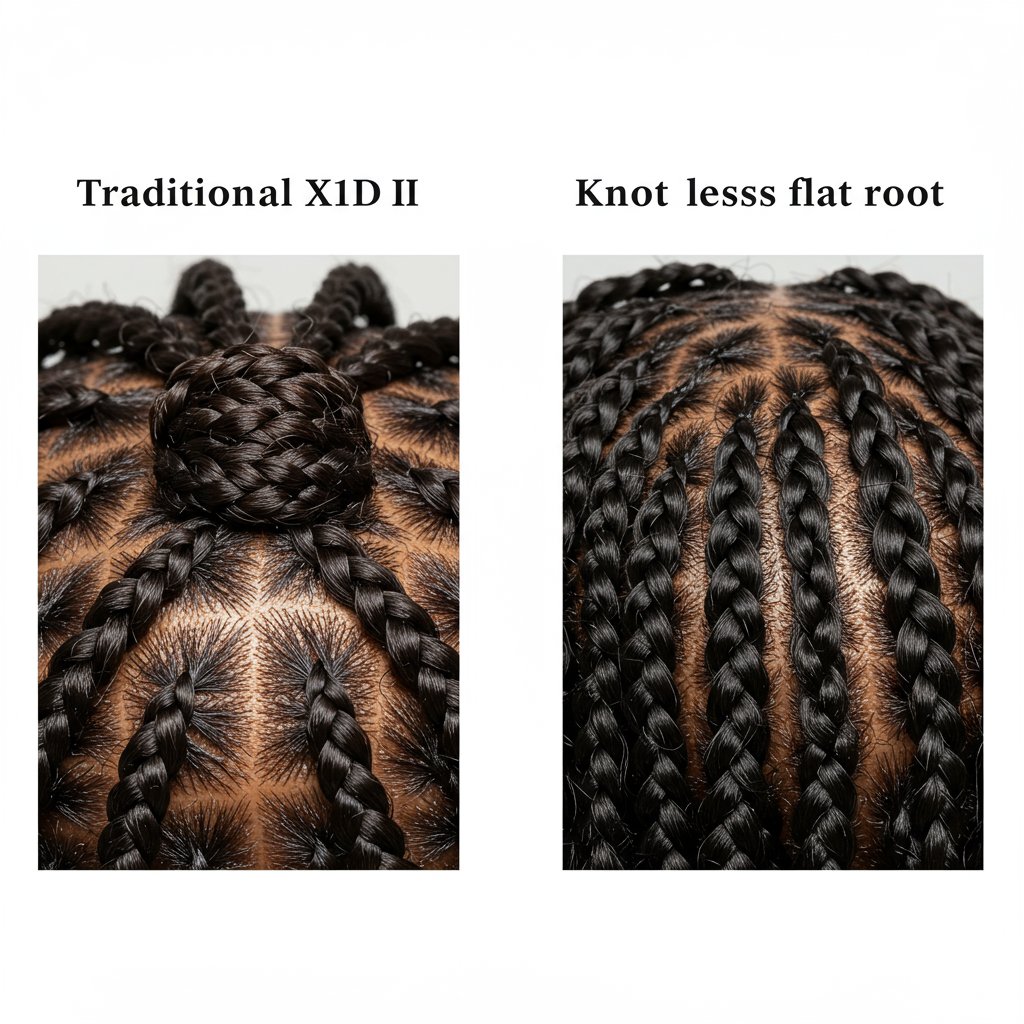
| Feature | Knotless Braids | Traditional Box Braids | | :--- | :--- | :--- | | Installation | Feed-in method, starts with natural hair. | Begins with a knot of extension hair at the root. | | Tension Level | Very low to none. Gentle on the scalp and edges. | High. Can cause significant pulling and scalp soreness. | | Appearance | Lays flat, seamless, and natural at the root. | Can have a bulky knot at the base of each braid. | | Flexibility | Immediately flexible. Can be styled in updos right away. | Stiff for the first few days, requiring time to loosen. | | Installation Time | Generally longer due to the intricate feed-in technique. | Often faster as the knotting process is quicker. | | Cost | Typically more expensive due to the higher skill and time required. | Generally more affordable. | | Longevity | Can last 4-8 weeks. Grows out more gracefully. | Can last 6-10 weeks, but new growth is more obvious. |
Sizing and Length: Finding Your Perfect Knotless Braid Style
Knotless braids are incredibly versatile, and the size and length you choose will dramatically affect the final look, installation time, and maintenance.
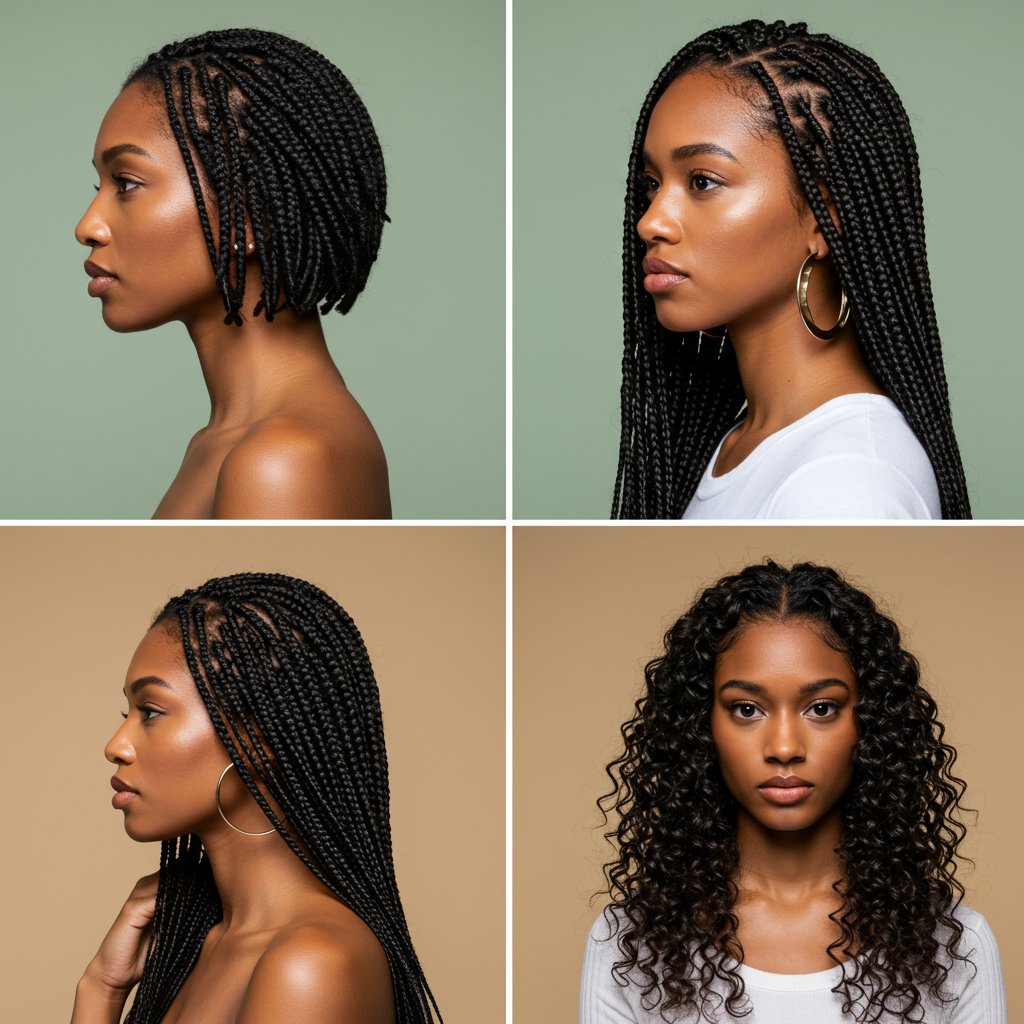
Small/Micro Braids
These tiny, delicate braids offer a very full and long-lasting style that mimics the appearance of loose hair from a distance. Pros: They can last longer than larger braids and provide incredible movement. Cons: The installation time is significantly longer (often 8+ hours), and the cost is higher. If installed too tightly or with too much hair, they can still create tension, defeating the purpose.Medium Braids
This is the most popular and versatile size. Medium knotless braids offer a perfect balance between a full look and a manageable installation time (typically 5-7 hours). They are substantial enough to be low-maintenance but small enough to be incredibly versatile for styling. This size is often considered the sweet spot for most people.Large/Jumbo Braids
For a bold, statement-making look, jumbo braids are the way to go. Pros: They have a much faster installation time (3-5 hours) and create a dramatic, chic aesthetic. Cons: They tend not to last as long as smaller braids (usually 3-4 weeks) as the larger sections of natural hair are more prone to frizz and new growth is more apparent. They can also be heavier if very long extensions are used.Essential Maintenance: Keeping Your Knotless Braids Flawless
Proper maintenance is crucial to extending the life of your knotless braids and keeping your natural hair healthy underneath.
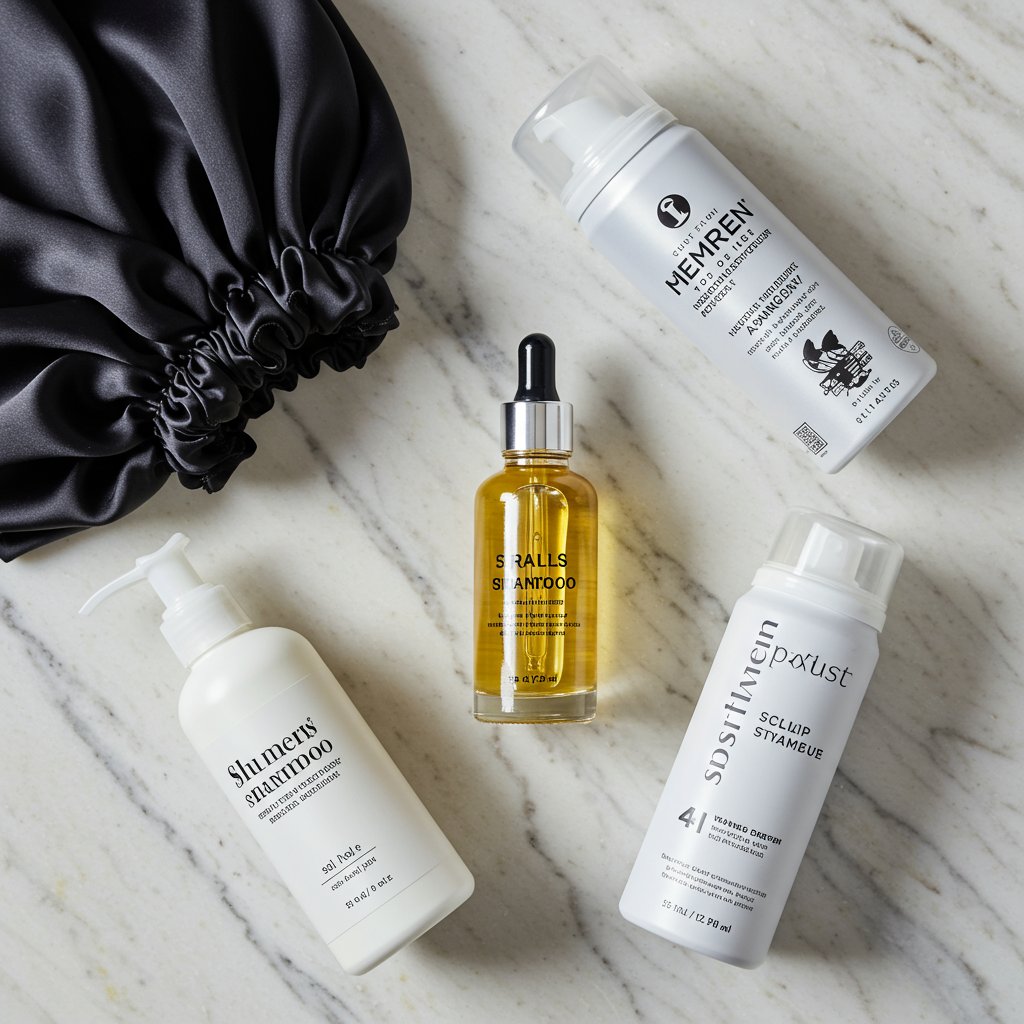
Scalp Care Routine
A healthy scalp is the foundation of a lasting style. Cleanse your scalp every 1-2 weeks using a diluted, sulfate-free shampoo in a nozzle-tip applicator bottle. This allows you to apply the cleanser directly to the scalp without disturbing the braids too much. Follow up by thoroughly rinsing and applying a light, moisturizing oil (like jojoba, grapeseed, or a specialized scalp oil) to prevent dryness and itching.Nighttime Protection
This is non-negotiable. To protect your braids from friction-induced frizz and to preserve your natural hair's moisture, always sleep in a silk or satin bonnet, scarf, or use a satin pillowcase. This simple step makes a massive difference in how fresh your braids look over time.Refreshing Your Braids
Over time, you may notice some frizz or flyaways. You can easily refresh your style by applying a light layer of styling mousse over the braids and tying them down with a scarf until they dry. This will help smooth the hair and restore that 'just-left-the-salon' sleekness. A daily spritz of a leave-in conditioner mixed with water can also help keep your natural hair hydrated within the braids.Frequently Asked Questions (FAQ)
Do knotless braids damage your hair?
When installed and maintained correctly, knotless braids are one of the least damaging protective styles available because they exert minimal tension on the hair follicles. Damage typically occurs only if the braids are installed too tightly, left in for too long (beyond 8 weeks), or removed improperly.
Can I get knotless braids on short hair?
Yes, but you'll need a certain minimum length for the stylist to grip. Generally, at least 2-3 inches of natural hair is required. An experienced stylist can work with shorter lengths, but the braids may not last as long. It's best to consult with a professional to see if your hair is a good candidate.How much do knotless braids typically cost?
Cost varies widely based on location, stylist experience, braid size, and length. Because they require more skill and time, knotless braids are generally more expensive than traditional box braids, often ranging from $175 to $400+.Can I wash my hair with knotless braids?
Absolutely! Washing is essential for scalp health. As mentioned in the maintenance section, focus on cleansing the scalp with a diluted shampoo and a nozzle applicator bottle. Avoid vigorous scrubbing of the braids themselves to minimize frizz. Always ensure your braids are completely dry afterward to prevent mildew.What's the best way to take down knotless braids without causing breakage?
Be patient and gentle. Start by cutting the braid a bit longer than your natural hair. Then, use a rat-tail comb and a product with slip (like conditioner or oil) to gently unbraid the hair. Detangle each section of your natural hair as you go before moving to the next. Never try to rip or rush through the takedown process.Are knotless braids suitable for fine or thin hair?
Yes, in fact, they are often a better option for fine or thin hair than traditional braids. Because the tension is much lower and the weight is distributed more evenly, they put less stress on delicate strands. It's advisable to opt for smaller or medium-sized braids rather than heavy jumbo braids to further minimize strain.Conclusion: Embrace the Future of Protective Styling
Knotless braids have rightfully earned their title as the hottest protective style of the year. They offer a masterful blend of chic aesthetics, stylistic versatility, and a profound commitment to hair health. By eliminating the tension-causing knot, this technique has revolutionized the braiding experience, making it more comfortable, safer, and accessible to a wider range of hair types and scalp sensitivities.
From their seamless, natural appearance to their immediate flexibility and lightweight feel, the benefits are clear. While they may require a greater investment of time and money upfront, the payoff in terms of scalp health, comfort, and a beautifully graceful grow-out process is undeniable. If you're looking for a protective style that truly protects, prioritizes the well-being of your hair, and delivers a stunning, modern look, then knotless braids are the perfect choice. Consult with an experienced, professional stylist to begin your journey with this game-changing style.

